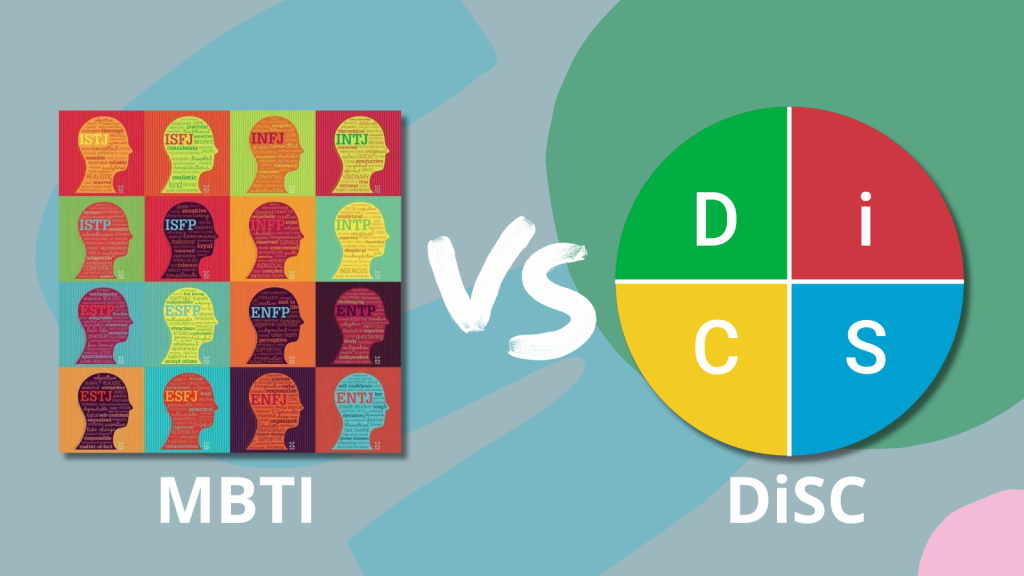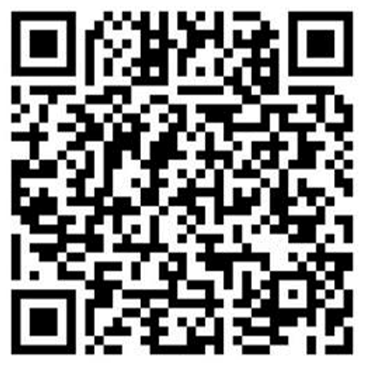Unleashing the Power of Authenticity: Unlocking Team Potential with MBTI

Shared by eTACSEN Managing Director Terence Yeung I recently had the opportunity to facilitate an MBTI workshop with a finance team in a logistics company. The insights gained from this experience were very much worth sharing with everyone, underscoring the value of embracing our authentic selves and leveraging personality preferences to unlock team potential. Let me share two stories that emerged from this workshop: Finding Your Voice: How an ENFP Blossomed in an ISTJ-Dominated Team Mark, a member of the finance department, had initially tested as an INFP but later confirmed that he was actually an ENFP. Over the years, he had suppressed his natural extroverted and sociable tendencies to fit in with the predominantly ISTJ team. The team members' singular focus on work and lack of casual conversation left Mark feeling unvalued and disconnected. During the MBTI workshop, Mark was encouraged to share his true feelings with the team. To his surprise, the team members expressed a desire for a more lively and upbeat work environment, and they enthusiastically welcomed Mark's unique ENFP qualities. After this revelation, Mark immediately embraced his authentic self, bringing his trademark humor and energy back to the team. This story highlights the importance of creating an environment where individuals feel empowered to be their true selves. By understanding and appreciating each team member's personality preferences, organizations can foster a more inclusive and engaging culture, where everyone's contributions are valued. Unlocking Potential: Leveraging MBTI Insights to Motivate and Empower Mary, an INFP responsible for compliance in the company, was initially misunderstood by her superior, John, who assumed she must be an ISTJ due to her excellent performance in developing standards and ensuring adherence. However, I explained to John that the only person who can truly confirm their type is the individual themselves. I suggested that John look at the situation from a different angle. As an INFP, Mary likely sought meaning and the opportunity to help others, which may not have been fully fulfilled in her current role. I recommended that John explore ways to align Mary's work with her deeper desire to make a meaningful impact, such as by involving her in mentoring newer team members or helping her see the broader significance of her compliance work. Mary confirmed that I was correct, sharing that she often went for volunteer work on the weekends, as it allowed her to find the deeper sense of purpose she craved. This story highlights the importance of understanding employees' personality preferences and using that knowledge to better motivate and empower them, ultimately driving higher levels of engagement and performance. These real-life examples demonstrate the substantial value of embracing authenticity and leveraging MBTI insights within a team. By creating an environment that promotes diversity, encourages self-awareness, and aligns work with individual motivations, organizations can unlock the full potential of their teams and foster a more engaged, collaborative, and fulfilling workplace. I hope these stories provide valuable inspiration as you continue to develop your own teams and leadership practices. By embracing authenticity and leveraging personality insights, we can create more fulfilling and productive work environments.
MBTI vs DiSC: Differences and Applications of Personality Assessment Tools

Shared by eTACSEN Managing Director Terence Yeung Understanding one’s personality is crucial for career development and interpersonal relationships. I would like to share the key differences between two well-known personality assessment tools, Myers-Briggs Type Indicator (or “MBTI”) and DiSC, to help you choose the tool that best aligns with your needs and explore how they can be used in different situations. MBTI and DiSC are among the most popular personality assessment tools today. However, they have distinct differences in their theories and applications. Type Theory: Unveiling Your Unique Personality Tendencies MBTI is based on Type Theory, which primarily focuses on identifying to which type an individual belongs on a certain dimension and does not evaluate the intensity of that type. The scores in the assessment reflect the clarity of an individual's belonging to a certain type. This theory consists of four dimensions: Extraversion (E) or Introversion (I), Sensing (S) or Intuition (N), Thinking (T) or Feeling (F), and Judging (J) or Perceiving (P). By combining these dimensions, MBTI categorizes personality into 16 types. It facilitates a comprehensive understanding of one's innate tendencies and personal preferences, including how individuals acquire energy, interact with the external world, perceive information, and make decisions. MBTI offers valuable insights for personal planning and development, empowering individuals to adapt more effectively to the environment, make informed career choices, and enhance their overall selves. Trait Theory: Revealing Your Behavioral Style and Situational Responses DiSC is based on Trait Theory, which assesses individuals' behavioral styles to understand personality traits. Trait Theory examines the intensity of individual traits. For example, a high score in the "D" category indicates a strong Dominance trait. DiSC classifies people’s behavioral styles into four main types: Dominance, Influence, Steadiness, and Conscientiousness. It focuses on individuals' behavioral expressions and interaction styles in different situations. DiSC is known for its simplicity and offers clear classifications of behavioral styles, allowing individuals to quickly grasp their own and others' behavioral tendencies. It is widely used in team interactions and organizations, facilitating better collaboration, communication, and problem-solving. MBTI vs DiSC: Differences in Depth and Simplicity MBTI offers a higher level of sophistication by providing detailed classifications and descriptions of personal traits. Its comprehensive nature makes it particularly valuable for professionals seeking a deeper understanding of themselves and others. However, this complexity can present challenges when interpreting and comprehending the MBTI. The requirement for in-depth thinking and interpretation may make it difficult for ordinary individuals to retain the eight letters and sixteen types associated with the MBTI. This difficulty in memorization, in turn, hinders the practical application of MBTI in daily interactions, limiting its potential to enhance relationships and improve communication effectiveness. DiSC stands out for its simplicity and ease of understanding. It offers clear classifications of behavioral styles and uses concise and straightforward descriptions, enabling individuals to quickly grasp their own and others' behavioral tendencies. DiSC is highly versatile and intuitive, making it suitable for a wide range of audiences including the general public. Application Suggestions: Tools for Personal Development and Team Collaboration When it comes to personal planning and development, MBTI offers precise and personalized guidance, helping individuals understand their innate preferences, strengths and weaknesses. It provides valuable insights for career development and interpersonal relationships. On the other hand, DiSC proves more advantageous in team interactions and organizational applications. By understanding the behavioral styles of team members, individuals can enhance collaboration, communication, and problem-solving. DiSC's user-friendly nature allows team members to quickly grasp each other’s behavioral tendencies, fostering enhanced cooperation and team effectiveness. MBTI and DiSC are distinct personality assessment tools that differ significantly in theory and application. MBTI delves into an individual's unique innate inclinations, making it ideal for personal development. In contrast, DiSC focuses on behavioral styles and situational responses, making it a valuable tool for enhancing team interactions and organizational contexts. Regardless of the chosen tool, personality assessment aids in gaining a better understanding of oneself and others, leading to enhanced personal and team effectiveness. By embarking on a journey of self-discovery and selecting the personality assessment tool that best aligns with one’s needs, individuals can achieve greater success and fulfillment in both their professional and personal lives.
Inspiring Story in Talent Development

Shared by our Managing Director, Mr. Terence Yeung I wanted to take a moment to share some truly inspiring success stories from our recent high potential talent development program. It is my sincere hope that these stories will resonate with you and provide valuable insights that can be applied to your own organization. Allow me to take you on a journey of transformation, where experienced managers with over 10 years of experience from both Hong Kong and Mainland China were taken to the next level of leadership. Our client, a prominent property developer with a global presence, sought to enhance the leadership skills of their high potential talents and develop them into all-round leaders. Our trainers' bilingual ability and extensive experience in both Hong Kong and Mainland China was particularly valuable as it ensured seamless communication and understanding between the trainers and participants. This allowed us to navigate cultural nuances and tailor the program to meet the specific needs of each group. With this commitment to cultural sensitivity, quality of the program can be maintained across both regions. The results of the program were nothing short of encouraging. From the CEO to the supervisors of the participants and the participants themselves, everyone expressed their high praise for the program. We received heartfelt gratitude from the participants, who appreciated the valuable training they received. The supervisors witnessed remarkable changes and improvements in the participants' daily work, while the CXOs were impressed by the creativity and value they brought to various projects. We utilized a variety of learning methods to ensure practicality, enabling participants to apply their newfound skills in the workplace. Moreover, we incorporated action learning projects to maximize the return on investment for the organization. The program kicked off with the CEO and department heads, as well as supervisors from both Hong Kong and Mainland China, participating. This demonstrated the importance of the program and the top management's support for this initiative. To better understand the participants' strengths and weaknesses, we conducted a 360 leadership assessment, which served as a valuable reference in designing the workshops. The workshops covered a range of essential leadership topics, such as Leadership Self-Awareness, Strategic Thinking, Effective Leadership Behaviors, Change Enablement, Stakeholder Engagement, People Management, and Leadership Presence. Each topic was carefully crafted to address specific needs and challenges faced by leaders in today's dynamic business landscape. We believe in practical learning that yields tangible results. To reinforce the learning, we implemented action learning projects. Small groups of participants formed project teams and identified projects that added real business value to the company. They engaged stakeholders, sought buy-in and support, and implemented proposed projects. This not only allowed participants to apply their learning in a real business environment but also provided the organization with a better return on investment. Throughout the program, team coaching and one-on-one coaching were integral components. Regular catch-ups with the project teams ensured progress was on track and any issues were addressed promptly. One-on-one coaching provided participants with the opportunity to seek guidance on the application of their learning and resolve any personal leadership challenges they faced. We also actively engaged the participants' supervisors by providing mentoring and coaching training. Regular catch-ups were held to report on the participants' learning and progress. This engagement proved invaluable, as supervisors became more involved and supportive than ever before. The culmination of the program was a final presentation to the top management, including the CEO. Participants showcased the results of their action learning projects and shared their overall learning from the program. This not only demonstrated the top management's commitment to talent development but also provided an opportunity for them to gather creative project ideas and follow up on them. It was truly a celebration of growth and development over a one-year learning period. Throughout this journey, I have personally witnessed the profound change and growth in the participants. For example, one participant who initially struggled with delegation and team management successfully developed these skills, leading to improved team performance and organizational outcomes. These stories of personal transformation and professional growth have touched me deeply and reaffirmed the meaningfulness of the work we do. I am proud to share that we have received overwhelmingly positive comments from all stakeholders involved, including top management, supervisors of the participants, and the participants themselves. The success of this program has been a driving force for me, as I firmly believe that when you find meaning in your work, you never feel tired. I wanted to share these stories with you, as I believe they highlight the value and impact of our talent development programs. If you are interested in exploring similar services for your organization or would like to discuss the specific needs of your high potential talents, I would be delighted to arrange a time to speak with you further.
Unveiling the Essence of Effective Training

Shared by Terence Yeung During a recent exchange with senior management, I was inspired to reflect deeply on what makes training effective. With over two decades of experience collaborating with trainers globally, I have come to realize that there are differing understandings among trainers and clients about what training truly entails and how it should be evaluated. I wish to share my perspective with you and invite your thoughts on the matter. 1. Training Should Inspire, Motivate, and Teach Change Before delving into the specifics, it is crucial to ask ourselves: Why do we train? This fundamental question serves as the guiding principle for effective training. Training should serve the following purposes: Trainees should acquire or enhance knowledge, skills, and techniques that are useful and applicable to their personal or professional lives. This involves equipping them with practical tools and capabilities that they can readily utilize. Trainees should develop new ways of thinking that inspire them to make better decisions, exercise sound judgment, and add value to their endeavors. Training should ignite a spark within individuals, providing them with fresh perspectives and encouraging them to embrace positive change. Therefore, by its very nature, training should deliver value to the trainees. This value can manifest in both educational and thought-provoking ways, empowering individuals to grow and evolve. 2. Training Should Not Be Measured Solely by Energy and Engagement While participant engagement is undeniably important, we must not solely rely on the energy in the room or the level of engagement as the primary indicators of effective training. Research findings consistently show that high levels of engagement enhance knowledge retention and make learning more memorable, thereby increasing the likelihood of skill application. However, it is crucial to emphasize that engagement alone does not constitute good training if there is no genuine learning taking place. Consider the common scenario where the following conversation occurs: A: "How did you find today's training?" B: "It was excellent! The participants were highly engaged, and the room was filled with energy. It was a great session!" Unfortunately, such conversations often transpire even when the trainer fails to deliver meaningful learning points during the training. To illustrate this further, let's take an extreme example: If each participant were asked to share an interesting joke, the energy and engagement levels would undoubtedly be high, but the absence of genuine learning would render it ineffective as a training session. In my humble opinion, training without effectively transferring knowledge and skills to participants cannot be considered good training, regardless of high participant engagement. 3. Facilitation Involves More Than Inviting People to Speak Trainers often facilitate discussions and group activities, encouraging participants to share their thoughts. However, I have witnessed instances where even experienced trainers fail to extract meaningful training points after soliciting responses from participants or conducting group discussions. For example, a trainer might ask participants to discuss certain topics in groups and subsequently invite them to share their views. However, once each group presents, the trainer moves on with a simple "Excellent! Great sharing. Next," without fully unpacking and analyzing the insights shared. While it is commendable to encourage participants, a skilled trainer should also actively listen, understand, paraphrase, and connect the group's contributions to the desired training objectives. 4. Experiential Exercises Should Be Relevant and Purposeful Experiential exercises have gained popularity in training sessions for their ability to create energy and engagement. However, it is essential to ensure that these exercises are thoughtfully designed and aligned with the intended training outcomes. They should not be included solely for the sake of energizing the room. The debriefing phase following these exercises must be relevant, connecting the experiences to the training points and enabling participants to reflect, internalize, and apply their newfound insights effectively. 5. Trainers May Not Have All the Answers, but They Should Offer Their Views During training sessions, participants often pose questions related to the subject matter. While redirecting questions to the group can be a useful technique, it is equally important for trainers to share their own perspectives. Trainees seek the trainer's expertise and insights. Therefore, after hearing various responses, a trainer should express their viewpoint, providing a balanced perspective that combines the contributions of the group with their own knowledge and experience. In conclusion, effective training goes beyond mere participant engagement and energy in the room. It should inspire, motivate, and teach change while delivering tangible value to the trainees. Training should be a catalyst for acquiring new knowledge, developing essential skills, and adopting fresh perspectives. As trainers, we must strive to facilitate meaningful discussions, design relevant experiential exercises, and actively contribute our own insights. By doing so, we can create an environment that fosters genuine learning and growth. Remember, training without effective knowledge transfer cannot be considered successful, regardless of the energy and engagement levels. Let us continue to explore and refine our approach to training, ensuring that it truly serves the needs of our trainees and empowers them to thrive in their personal and professional lives.
Nurturing Team Collaboration: A Journey of Transformation

Shared by Terence Yeung I recently had the incredible opportunity to facilitate a workshop for a senior management team in the multinational property development and sales business. The challenge was to address the need for change management training within their international business division. However, after thorough assessment, it became clear that the underlying issue was team calibration rather than change management. Taking an effective approach, I proposed a real team intervention using the Five Behaviours of Cohesive Teams (5B) framework. This framework emphasizes the crucial elements for building a highly functioning team: building trust, mastering conflict, achieving commitment, holding each other accountable, and focusing on collective results. The HR manager agreed that focusing on these aspects made more sense than traditional change management. The international business division was composed of independent country managers who rarely interacted, except for occasional collaborations during international exhibitions. I challenged them to consider why they were a team beyond the fact that all country heads reported to the head of international business. This question sparked introspection and a realization that they had not fully leveraged the potential of working collaboratively across countries. During the workshop, we helped the team define their true meaning as a team and establish a common goal critical for their future success. The most precious outcome of the seminar was the team's unanimous agreement and commitment to a significant thematic goal: "Establishing a Framework for Collaboration among International Business Offices." This goal encompasses reshaping the entire incentive system, human resources management, and internal processes. We further discovered tremendous business opportunities, including referrals from international clients, talent exchanges for personal growth, increased employee retention, and the sharing of best practices. As the team collectively envisioned this goal, their astonishment and excitement were truly touching. Some even cannot believe as it was too idealistic to be true. To ensure the realization of this vision, we assigned responsibilities and developed a follow-up implementation plan. I am absolutely thrilled with the outcome of this workshop. It exemplifies the true meaning and impact of my work. Together, we have unlocked the potential for collaboration, innovation, and growth within the international business division.
Artificial Intelligence in Learning and Development: Five Surprising Facts You Need to Know
 Artificial Intelligence in Learning and Development: Five Surprising Facts You Need to Know The last few years have been a roller coaster for learning and development professionals around the world. First, there was the abrupt transition to the hybrid workplace, which required entire organizations to upskill and reskill employees under immense pressure. With the ever-evolving world of work, C-suite executives were driving a strategic focus on organizational performance, putting learning and development and human resources professionals, as well as managers at large, in the position of having to implement large-scale initiatives under unprecedented circumstances. If that wasn’t enough, we are now seeing emerging technologies like Artificial Intelligence (AI) opening new doors (and new risks!) for industries across the world, and the field of learning and development is not exempt from the impact of AI. As lifelong learners, we wanted to learn more about how AI is impacting the world of work, and by extension, learning and development. Wiley Workplace Intelligence surveyed 3,000 people across industries to hear what is happening in the workplace. 1. Nearly One Third of Workplaces Are Actively Using AI Almost one-third of those surveyed said their business has adopted AI technology in at least one business function. While AI has been around for many years, it exploded into our mainstream culture in 2022 with the launch of Chat GPT. Promised to unlock productivity, organizations around the world are actively testing AI across a range of functions to best understand its potential impact on performance. As such, we expect to see AI technology adoption accelerate in the coming year. 2. AI is Being Leveraged in Every Organizational Function AI technology is most often being adopted in operations, marketing and sales, and product/service development. This is to be expected as these business functions would benefit from leveraging automation capabilities to increase efficiency and streamline processes. We asked participants to select the business function(s) which have incorporated AI within their organization. Business Function Utilizing AI 17% Service Operations 15% Marketing and sales 15% Product or service department 9% Supply chain management 8% Manufacturing 7% Strategy and corporate finance 7% Human resources and development 6% Risk (Note: Results will not equal 100% as participants could select multiple options) As illustrated above, service operations, marketing and sales, and product development have the highest AI adoption rates. Human resources and development, as well as risk, have the lowest adoption rates. 3. Budget is the Biggest Barrier to Wider AI Utilization Why aren’t organizations adopting AI in more business functions? Curious to find out what obstacles were keeping organizations from adopting AI, we asked participants to pick the biggest obstacle they face. Organizations have strategic priorities they must focus time and money on that will bring the most benefit to the business. For 19% of people, AI adoption is not a strategic priority which means it likely won’t get the funding needed to move forward. 25% of people said budget constraints are a significant barrier to AI integration in their organization. AI adoption is likely a complex, costly, and time-consuming process that can require upgrading current infrastructure, software, training, and ongoing maintenance. Combined with getting buy-in from both learners and facilitators, organizations potentially face a daunting task. 4. People Still Prefer Humans to AI in Learning and Development People crave human connection with 59% wanting an instructor to direct their learning. When we explored preference about content development, we found that people have strong opinions about who should create material. 5. Learning and Development Professionals Are Optimistic About Benefits of AI How does this impact learning and development practitioners? When strategically incorporating AI into specific areas, it can have a positive impact. AI as an automation tool for administrative tasks allows learning and development professionals to focus their efforts on more value-added activities like curriculum design, instructional design, and learner support. This in turn allows for more meaningful and relevant learning opportunities. Knowing people seek human connection when learning, learning and development practitioners should consider ways to continue meeting that need while incorporating technological advances into their practice. Although people may not be ready for AI-directed learning, AI capabilities can be leveraged to help find skills gaps through assessments to create learning paths for employees. Combining AI capabilities and human interaction can be an effective way to embrace technological advancements while retaining the personal connection that comes with facilitated learning experiences that increase connection and cohesion in the workplace. Whether you implement trust-building teamwork solutions like The Five Behaviors, empathy and cohesion-building experiences like Everything DiSC, or leadership development solutions like The Leadership Challenge combining the power of AI and the power of human connection can elevate your entire organization. *Source from Wiley Workplace Intelligence. Quick Take by Mark Scullard, PhD
Artificial Intelligence in Learning and Development: Five Surprising Facts You Need to Know The last few years have been a roller coaster for learning and development professionals around the world. First, there was the abrupt transition to the hybrid workplace, which required entire organizations to upskill and reskill employees under immense pressure. With the ever-evolving world of work, C-suite executives were driving a strategic focus on organizational performance, putting learning and development and human resources professionals, as well as managers at large, in the position of having to implement large-scale initiatives under unprecedented circumstances. If that wasn’t enough, we are now seeing emerging technologies like Artificial Intelligence (AI) opening new doors (and new risks!) for industries across the world, and the field of learning and development is not exempt from the impact of AI. As lifelong learners, we wanted to learn more about how AI is impacting the world of work, and by extension, learning and development. Wiley Workplace Intelligence surveyed 3,000 people across industries to hear what is happening in the workplace. 1. Nearly One Third of Workplaces Are Actively Using AI Almost one-third of those surveyed said their business has adopted AI technology in at least one business function. While AI has been around for many years, it exploded into our mainstream culture in 2022 with the launch of Chat GPT. Promised to unlock productivity, organizations around the world are actively testing AI across a range of functions to best understand its potential impact on performance. As such, we expect to see AI technology adoption accelerate in the coming year. 2. AI is Being Leveraged in Every Organizational Function AI technology is most often being adopted in operations, marketing and sales, and product/service development. This is to be expected as these business functions would benefit from leveraging automation capabilities to increase efficiency and streamline processes. We asked participants to select the business function(s) which have incorporated AI within their organization. Business Function Utilizing AI 17% Service Operations 15% Marketing and sales 15% Product or service department 9% Supply chain management 8% Manufacturing 7% Strategy and corporate finance 7% Human resources and development 6% Risk (Note: Results will not equal 100% as participants could select multiple options) As illustrated above, service operations, marketing and sales, and product development have the highest AI adoption rates. Human resources and development, as well as risk, have the lowest adoption rates. 3. Budget is the Biggest Barrier to Wider AI Utilization Why aren’t organizations adopting AI in more business functions? Curious to find out what obstacles were keeping organizations from adopting AI, we asked participants to pick the biggest obstacle they face. Organizations have strategic priorities they must focus time and money on that will bring the most benefit to the business. For 19% of people, AI adoption is not a strategic priority which means it likely won’t get the funding needed to move forward. 25% of people said budget constraints are a significant barrier to AI integration in their organization. AI adoption is likely a complex, costly, and time-consuming process that can require upgrading current infrastructure, software, training, and ongoing maintenance. Combined with getting buy-in from both learners and facilitators, organizations potentially face a daunting task. 4. People Still Prefer Humans to AI in Learning and Development People crave human connection with 59% wanting an instructor to direct their learning. When we explored preference about content development, we found that people have strong opinions about who should create material. 5. Learning and Development Professionals Are Optimistic About Benefits of AI How does this impact learning and development practitioners? When strategically incorporating AI into specific areas, it can have a positive impact. AI as an automation tool for administrative tasks allows learning and development professionals to focus their efforts on more value-added activities like curriculum design, instructional design, and learner support. This in turn allows for more meaningful and relevant learning opportunities. Knowing people seek human connection when learning, learning and development practitioners should consider ways to continue meeting that need while incorporating technological advances into their practice. Although people may not be ready for AI-directed learning, AI capabilities can be leveraged to help find skills gaps through assessments to create learning paths for employees. Combining AI capabilities and human interaction can be an effective way to embrace technological advancements while retaining the personal connection that comes with facilitated learning experiences that increase connection and cohesion in the workplace. Whether you implement trust-building teamwork solutions like The Five Behaviors, empathy and cohesion-building experiences like Everything DiSC, or leadership development solutions like The Leadership Challenge combining the power of AI and the power of human connection can elevate your entire organization. *Source from Wiley Workplace Intelligence. Quick Take by Mark Scullard, PhD
